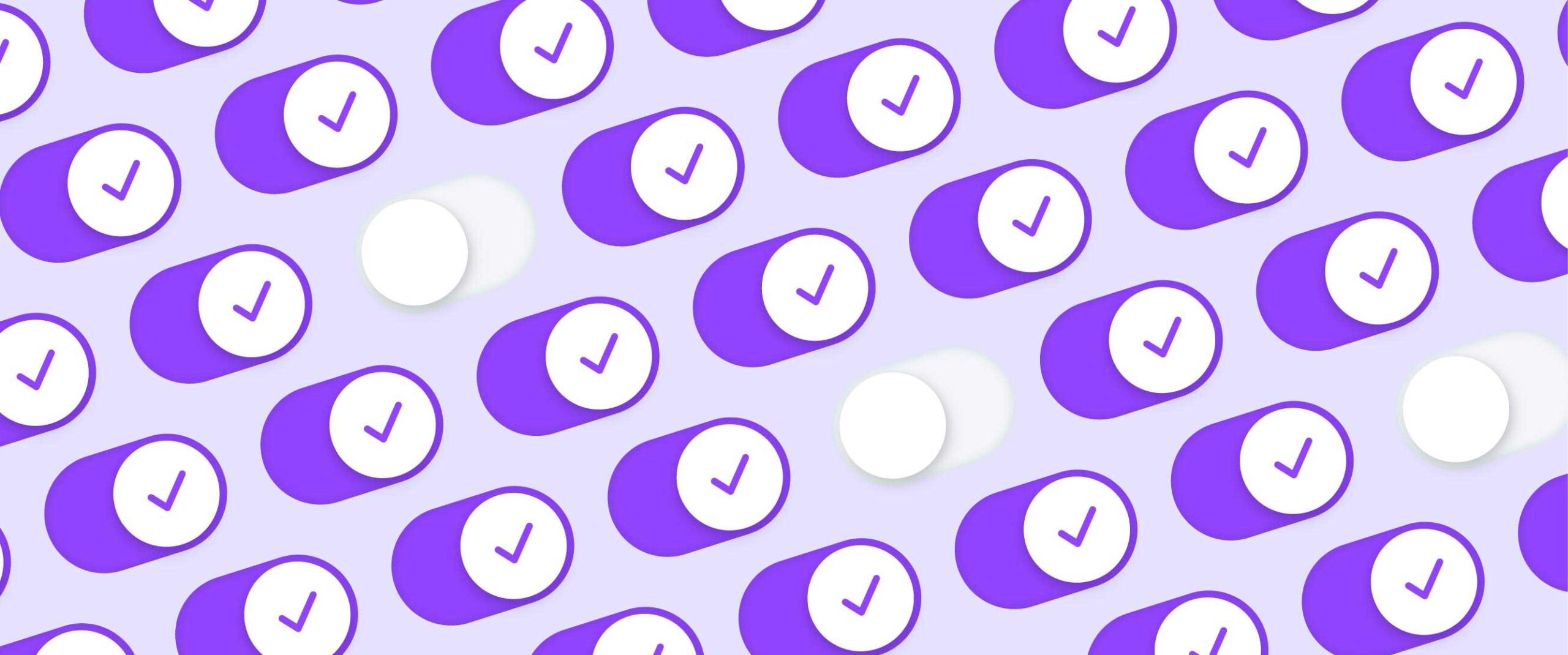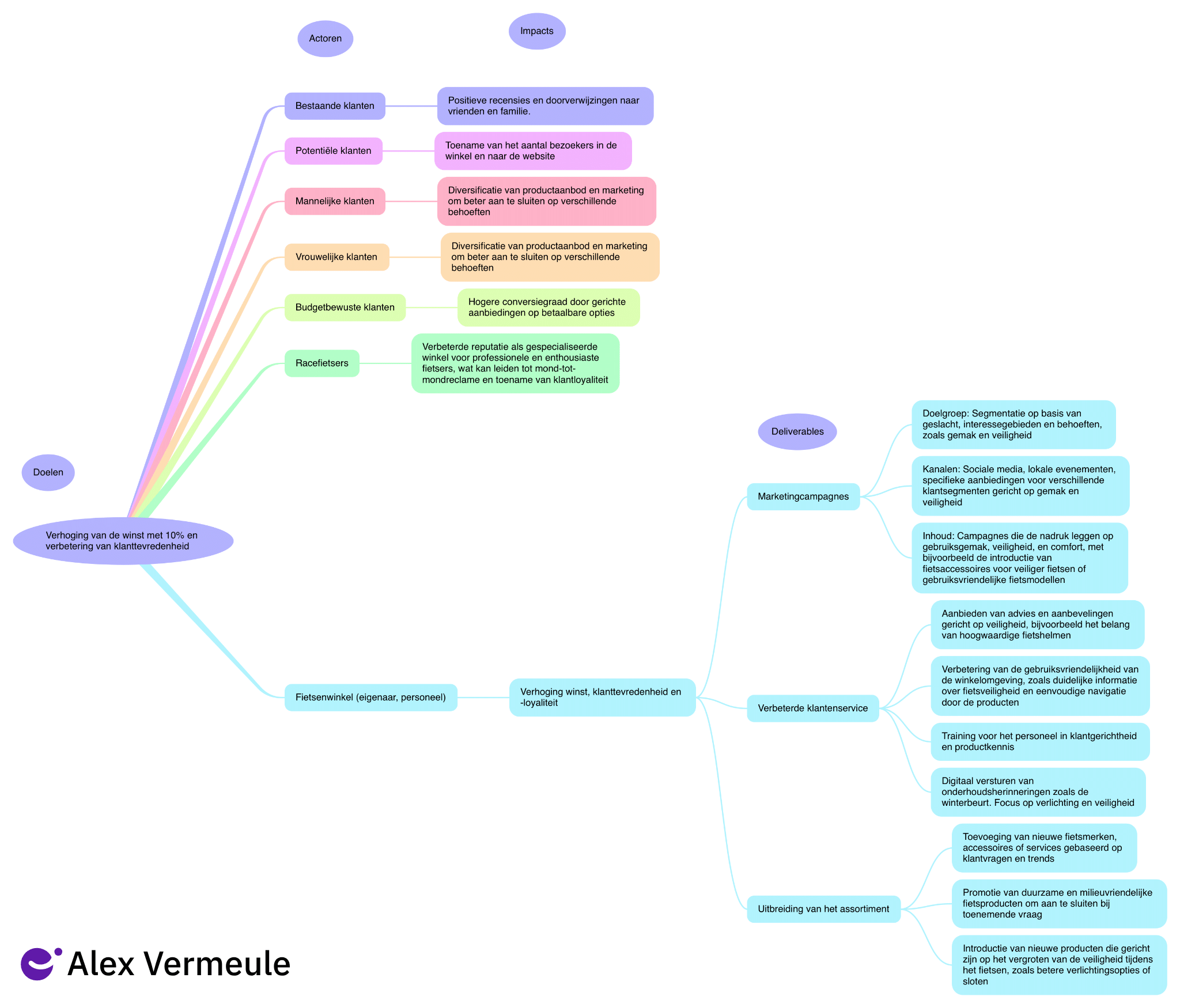Definition of Impact Mapping
Impact Mapping is a strategic planning and visualization technique that helps you focus on creating value for users and achieving business objectives. This is done by understanding and prioritizing the impact of different initiatives.
Impact Mapping creates a graphical representation of various business goals (Goals), the associated change initiatives (Deliverables), the measurable outcomes (Impacts) and the stakeholders (Actors). The idea is to show how everything is interconnected. This then helps determine the most valuable features or actions that will contribute to achieving desired objectives.
- Goals; emphasize the purpose or reason behind a certain action.
- Deliverables; are the actions or initiatives undertaken to achieve the goals.
- Impacts; are the measurable results or effects expected to be achieved through the execution of the Deliverables.
- Actors; are the stakeholders, teams or individuals involved in achieving the goals through the delivery of the deliverables.
Example of Impact Mapping
In this example, we apply Impact Mapping to a bicycle shop around the corner called Seref.
Goals
- Increase profit by 10% and improve customer satisfaction
Actors
- Existing customers
- Potential customers
- Male customers
- Female customers
- Budget-conscious customers
- Racing cyclists
- Bicycle shop (owner, staff)
Impacts
- Existing customers: Positive reviews and referrals to friends and family
- Potential customers: Increase in the number of visitors to the shop and the website
- Male and female customers: Diversification of product range and marketing to better meet different needs
- Budget-conscious customers: Higher conversion rate through targeted offers on affordable options
- Racing cyclists: Improved reputation as a specialized shop for professional and enthusiastic cyclists, which can lead to word-of-mouth and increased customer loyalty
- Bicycle shop (owner, staff): Increase in profit, customer satisfaction and loyalty
Deliverables
- Marketing campaign
- Target audience: Segmentation based on gender, areas of interest, and needs, such as convenience and safety
- Channels: Social media, local events, specific offers for different customer segments focusing on convenience and safety
- Content: Campaigns emphasizing ease of use, safety and comfort, with the introduction of bicycle accessories for safer cycling or user-friendly bicycle models
- Improved customer service
- Offering advice and recommendations focused on safety, such as the importance of high-quality bicycle helmets
- Improvement of the shop’s user-friendliness, such as clear information on bicycle safety and easy navigation through the products
- Training for staff in customer service and product knowledge
- Digital sending of maintenance reminders such as the winter service. Focus on lighting and safety
- Expansion of the range
- Addition of new bicycle brands, accessories or services based on customer queries and trends
- Promotion of sustainable and eco-friendly bicycle products to meet increasing demand
- Introduction of new products aimed at increasing safety while cycling, such as better lighting options or locks
Measurable Goals
- Increase the profit of the bicycle shop by 10% for the coming year
- Collect at least 50 new customer reviews with an average rating of 4.5/5 for customer satisfaction, distributed across different customer segments, emphasizing convenience and safety as positive aspects
The Impact Map for Seref specifically focuses on improving convenience and safety for different customer segments. By focusing on these aspects and the needs of customers, Seref aims to achieve both revenue growth and customer satisfaction.
Ultimately, this visual overview aids in decision-making, prioritizing initiatives and focusing on activities that have the greatest impact on the goals.

